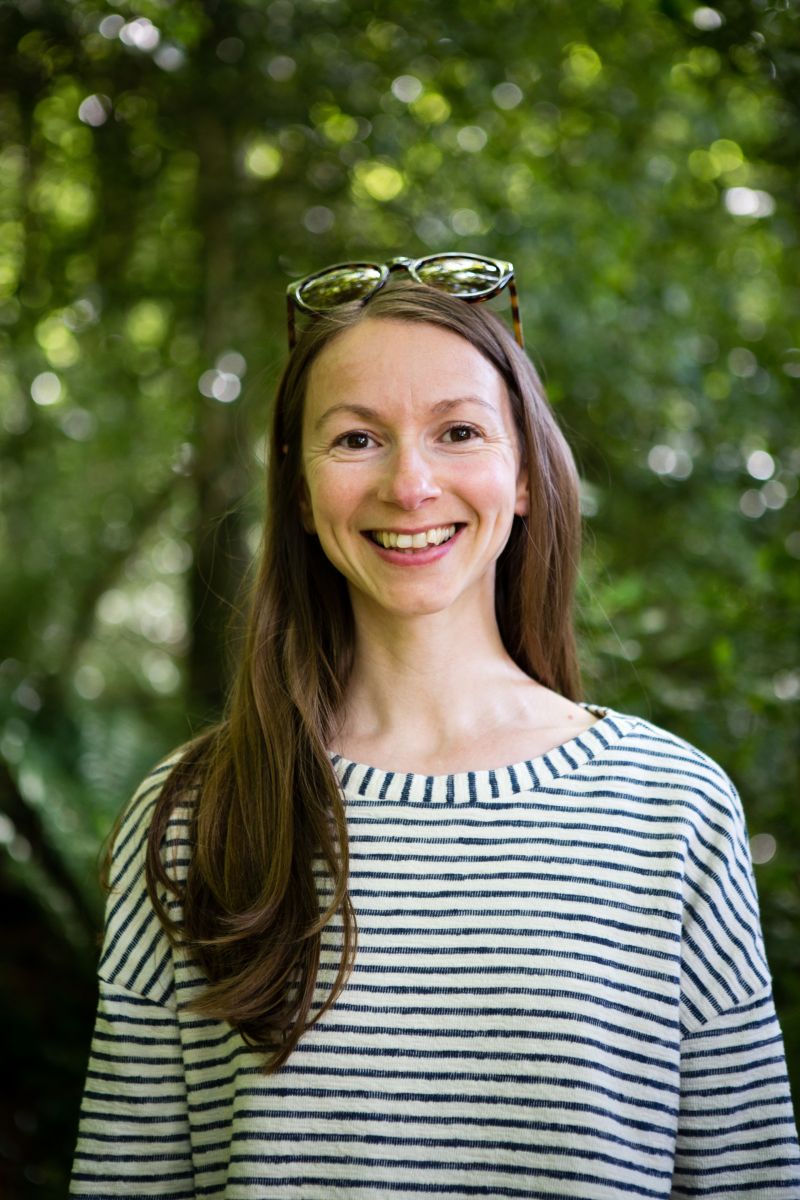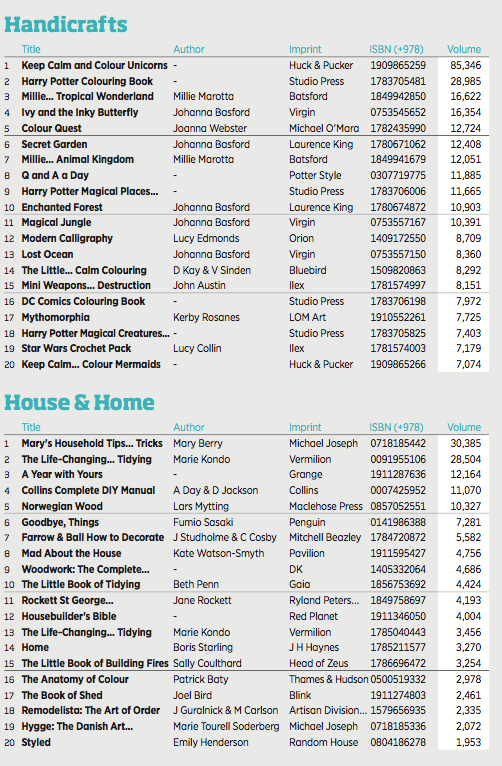You are viewing your 1 free article this month. Login to read more articles.
Craft market realigns following record, colouring-fuelled years
Cast your minds back to the sunlit uplands of 2015, when there were only seven Harry Potter books, the pound was a hefty £1.51 against the dollar and, to general disdain and mockery, some unfortunately coiffed reality TV star announced his surely ill-fated bid for the US presidency. Most importantly, the print market was back in the black for the first time in seven years, posting value growth of 6.6% year on year. It has maintained that annual growth since, though 2017’s increase in value was a razor-thin 0.1%.
 Though vloggers, wellness bloggers and parody Ladybird Christmas gifts all helped, the most out-of-the-blue trend was adult colouring books. It’s easy to forget now how huge the trend really was—Millie Marotta’s Animal Kingdom spent 22 weeks as the Paperback Non-fiction number one, with Johanna Basford’s Enchanted Forest and Secret Garden often snapping at its heels. The bestseller chart for 2015 also featured four colouring books in its top 20. As a result, the Handicrafts, Arts & Crafts category soared 261% in volume year on year to 4.9 million books sold, and due to the trend’s novelty, that didn’t even account for all colouring book sales—many were coded as Children’s or Mind, Body & Spirit (due to the "mindfulness" aspect) instead.
Though vloggers, wellness bloggers and parody Ladybird Christmas gifts all helped, the most out-of-the-blue trend was adult colouring books. It’s easy to forget now how huge the trend really was—Millie Marotta’s Animal Kingdom spent 22 weeks as the Paperback Non-fiction number one, with Johanna Basford’s Enchanted Forest and Secret Garden often snapping at its heels. The bestseller chart for 2015 also featured four colouring books in its top 20. As a result, the Handicrafts, Arts & Crafts category soared 261% in volume year on year to 4.9 million books sold, and due to the trend’s novelty, that didn’t even account for all colouring book sales—many were coded as Children’s or Mind, Body & Spirit (due to the "mindfulness" aspect) instead.
Three years on, Handicrafts, Arts & Crafts is still experiencing aftershocks from the colouring book earthquake. Of the category’s 20 top sellers in the 52 weeks to 14th July, 16 were colouring books—and of those, eight were published before 2016. Rival illustrators Marotta and Basford feature six times between them: Marotta’s Tropical Wonderland, released at the height of the trend in June 2015, has sold 330,359 copies to date, and charts alongside her 2014-published Animal Kingdom. Basford’s 2017 title Ivy and the Inky Butterfly charts fourth overall, alongside her earlier behemoths Secret Garden, Enchanted Forest and Lost Ocean. Of her 1.15 million books sold in total, Ivy and the Inky Butterfly accounts for just 1.4%.
But a late-comer tops Handicrafts, Arts & Crafts’ top 20. Keep Calm and Colour Unicorns, published in summer 2016, has sold 85,346 copies in the past year, managing to deftly bridge the gap from one quirky trend to another. Books about unicorns now clutter the weekly Pre-school top 20 as incessantly as colouring books did in the Paperback Non-fiction chart in 2015.
Since 2015, the Handicrafts, Arts & Crafts top-line has abruptly declined, dropping 22% in value year on year in 2016 and falling a further 31% in 2017. However, for 2018 to date, it is a healthy 27% up in value when compared against the final year of the pre-colouring book era (2014), so the category, rather than being in terminal decline, simply appears to be realigning itself after a sensational breakout trend.
The lone non-colouring book in the category’s top 10 was Q and A a Day, a journal in which a question is posed each day for five years, and the owner can see how their answers change across a half decade. Released in 2011, the title sold just 529 copies in its first year on sale. No doubt the publisher’s answer to "Was this a good idea?" has changed in the past seven years, given its 2,464% rise in volume over that time.
Cleaning up
The House & Home category also enjoyed a bump in 2015, when it jumped 30% in value to post its best annual total since 2007. The cause? Marie Kondo’s The Life-Changing Magic of Tidying, which sold over 200,000 copies in paperback. The quirky hit, translated from Japanese, has continued to sell well, and charts second in the past-52-weeks chart; it also arguably prompted the success of Mary Berry’s Household Tips and Tricks, which tops the chart, along with fellow entries Beth Penn’s The Little Book of Tidying and Fumio Sasaki’s Goodbye, Things—as well as self-help title Sarah Knight’s The Life-Changing Magic of Not Giving a F*ck, which has sold over 100,000 copies.
Marie Tourell Soderberg’s Hygge also charted in House & Home, in 19th. Like colouring books, hygge titles were spread across categories, with the trend’s lantern-bearer, Meik Wiking’s The Little Book of Hygge, coded in Popular Psychology. While Wiking’s title shifted over a quarter of a million copies in 2016–17, the trend as a whole never quite became the feng shui of this decade—leading to diminishing returns for its off-shoots lagom, lykke and ikigai.











